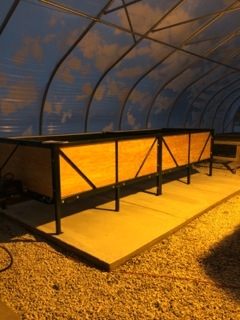You are here
Vermicompost (In Progress)
Recent Project Updates
-
12/28/2021SSC received a semesterly report for Fall 2021 for the vermiCUlture project on 12/12/2021. Please see attached.
-
12/4/2020Attached are the meeting minutes and chat log of the Zero Waste SWATeam on 12/4/2020. The following were discussed:SSC Letter of Support for Illini Union Shadowbox Recycling projectVermicompostingCompostingNASEM Circular Economy ConferenceFood...
Project Family
-
Reduce Foodwaste
- Compost at Illini Union
- Compost at National Soybean Research Center (NSRC) [ARCHIVED]
- Environment-Enhancing Energy Paradigm for Food Waste to Biofuel and Biomaterial [ARCHIVED]
- Enviropures [ARCHIVED]
- Feasibility Research on Food Waste Biodigesters
- Food Donation
- Food Literacy Project
- Grind2Energy
- Large-Scale Food Waste Composting
- Project4less
- Vermicompost
Associated Collections
Description
Project Team
-
Primary Contact:
Maddy LibermanProject Leader:
Zachary GrantTeam Members:
- Yiyun Jin
Themes
-
Primary Theme:
Project Location(s)
This map is interactive! Click (or touch) and drag to pan; scroll (or pinch) to zoom.

